ArangoDB v3.8 reached End of Life (EOL) and is no longer supported.
This documentation is outdated. Please see the most recent version at docs.arangodb.com
Traversals explained
General query idea
A traversal starts at one specific document (startVertex) and follows all edges connected to this document. For all documents (vertices) that are targeted by these edges it will again follow all edges connected to them and so on. It is possible to define how many of these follow iterations should be executed at least (min depth) and at most (max depth).
For all vertices that were visited during this process in the range between min depth and max depth iterations you will get a result in form of a set with three items:
- The visited vertex.
- The edge pointing to it.
- The complete path from startVertex to the visited vertex as object with an attribute edges and an attribute vertices, each a list of the coresponding elements. These lists are sorted, which means the first element in vertices is the startVertex and the last is the visited vertex, and the n-th element in edges connects the n-th element with the (n+1)-th element in vertices.
Example execution
Let’s take a look at a simple example to explain how it works. This is the graph that we are going to traverse:
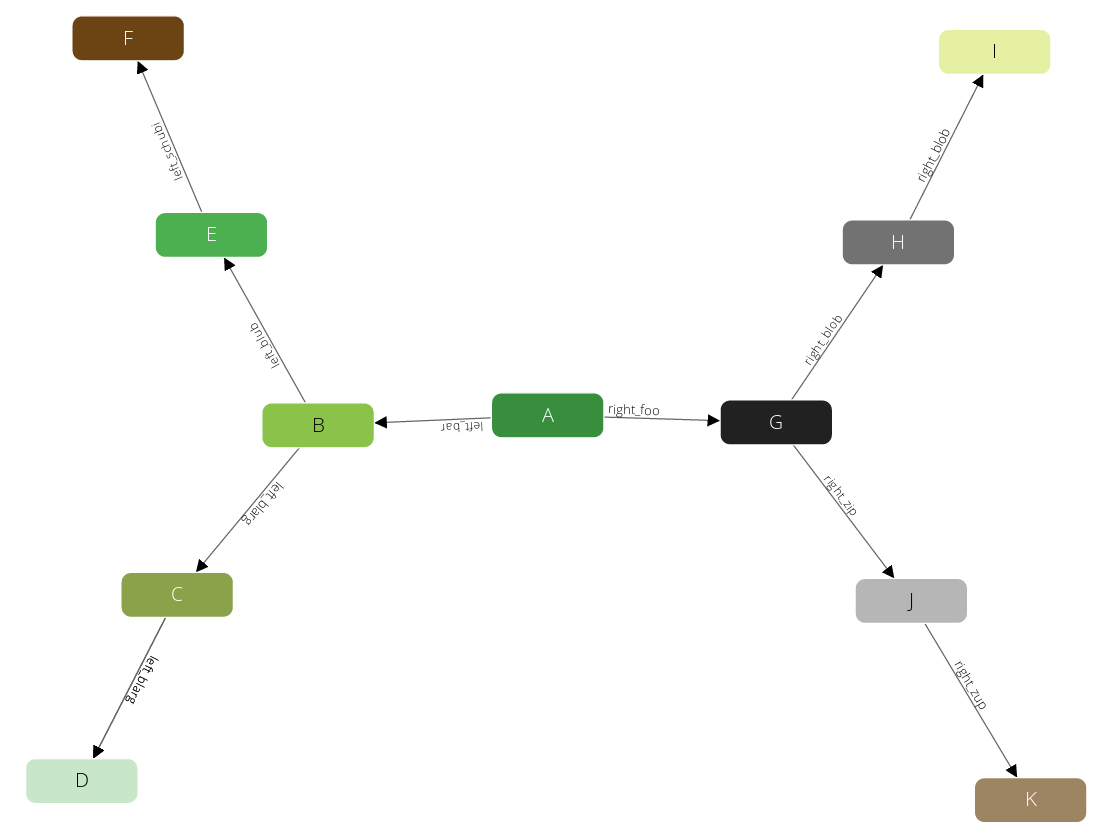
We use the following parameters for our query:
- We start at the vertex A.
- We use a min depth of 1.
- We use a max depth of 2.
- We follow only in
OUTBOUNDdirection of edges
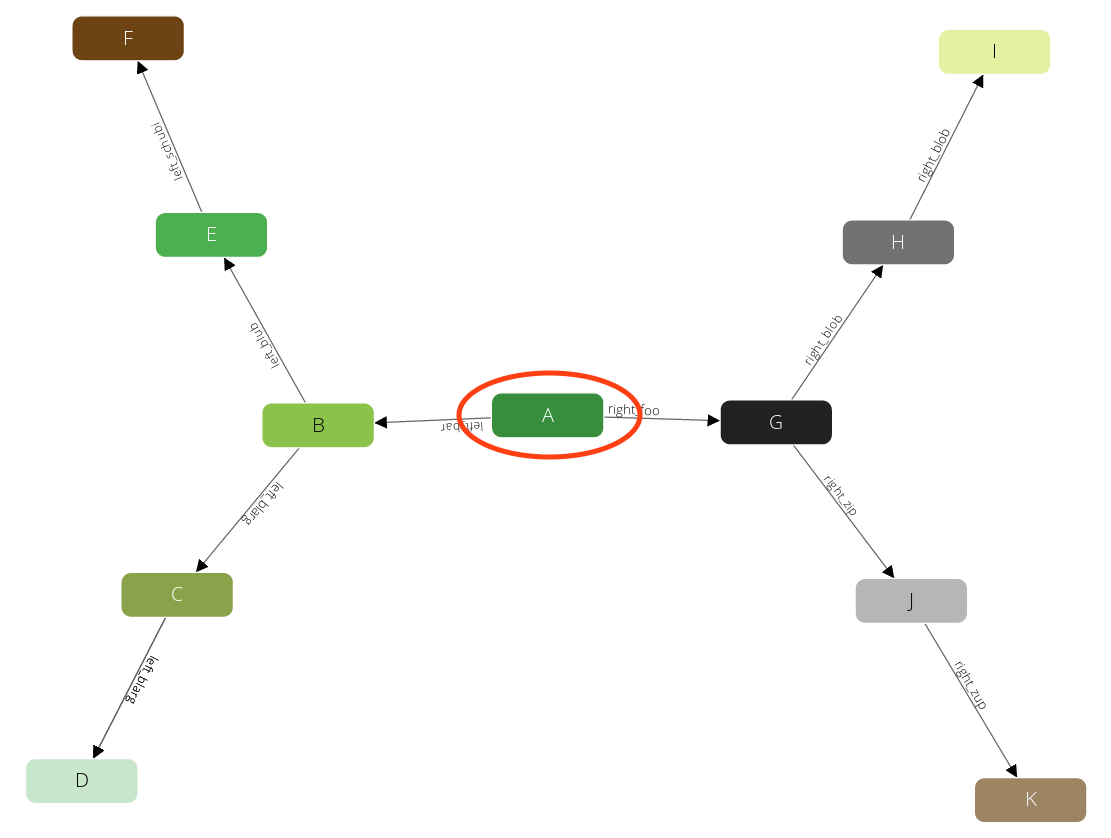
Now it walks to one of the direct neighbors of A, say B (note: ordering is not guaranteed!):
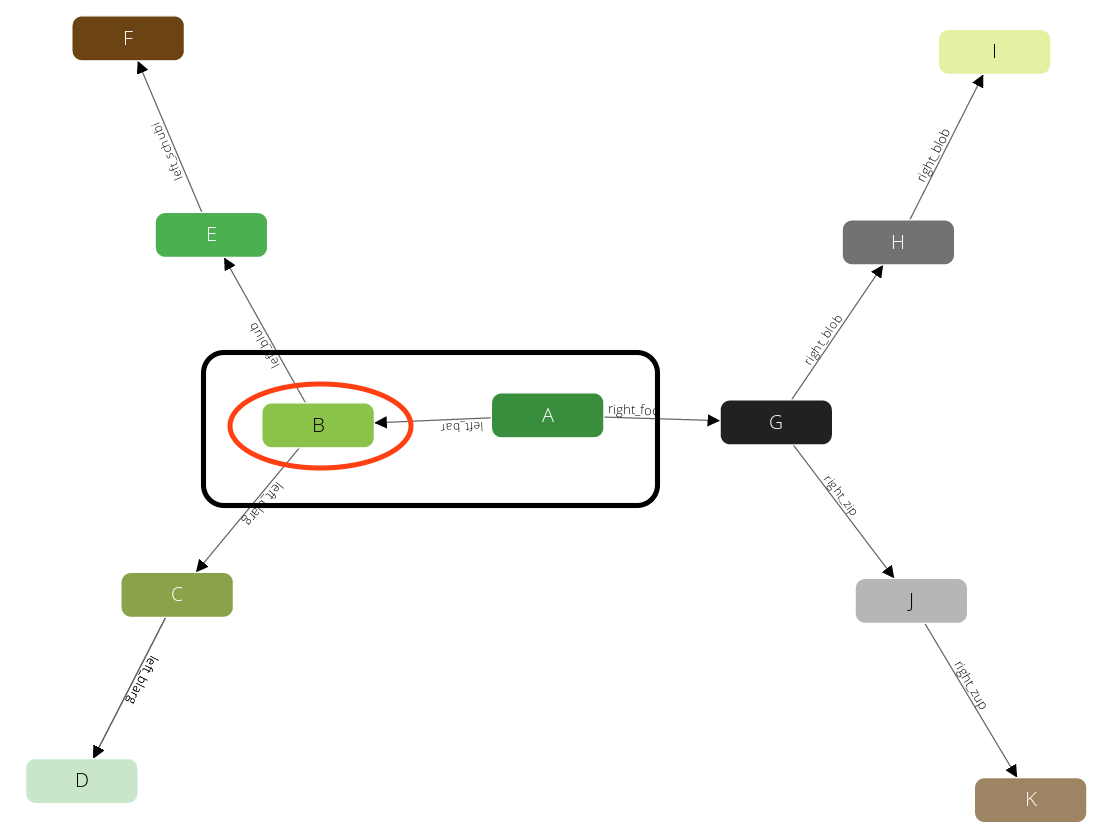
The query will remember the state (red circle) and will emit the first result A → B (black box). This will also prevent the traverser to be trapped in cycles. Now again it will visit one of the direct neighbors of B, say E:
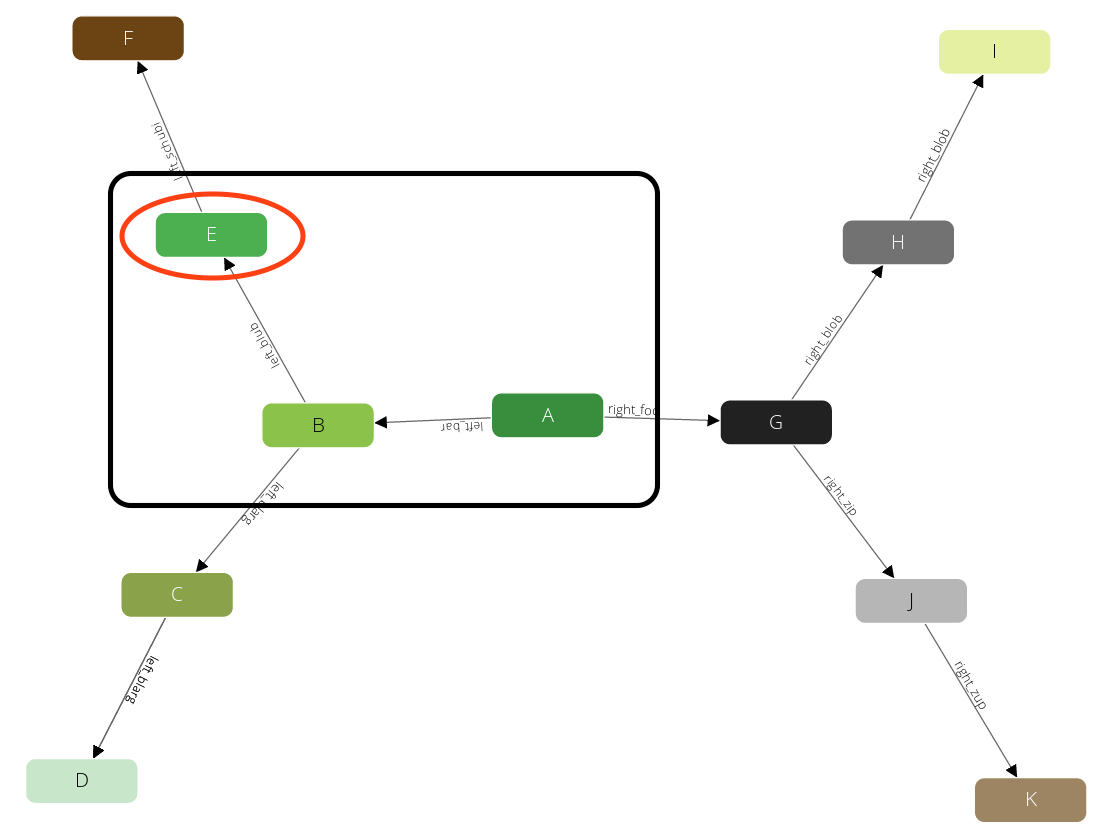
We have limited the query with a max depth of 2, so it will not pick any neighbor of E, as the path from A to E already requires 2 steps. Instead, we will go back one level to B and continue with any other direct neighbor there:
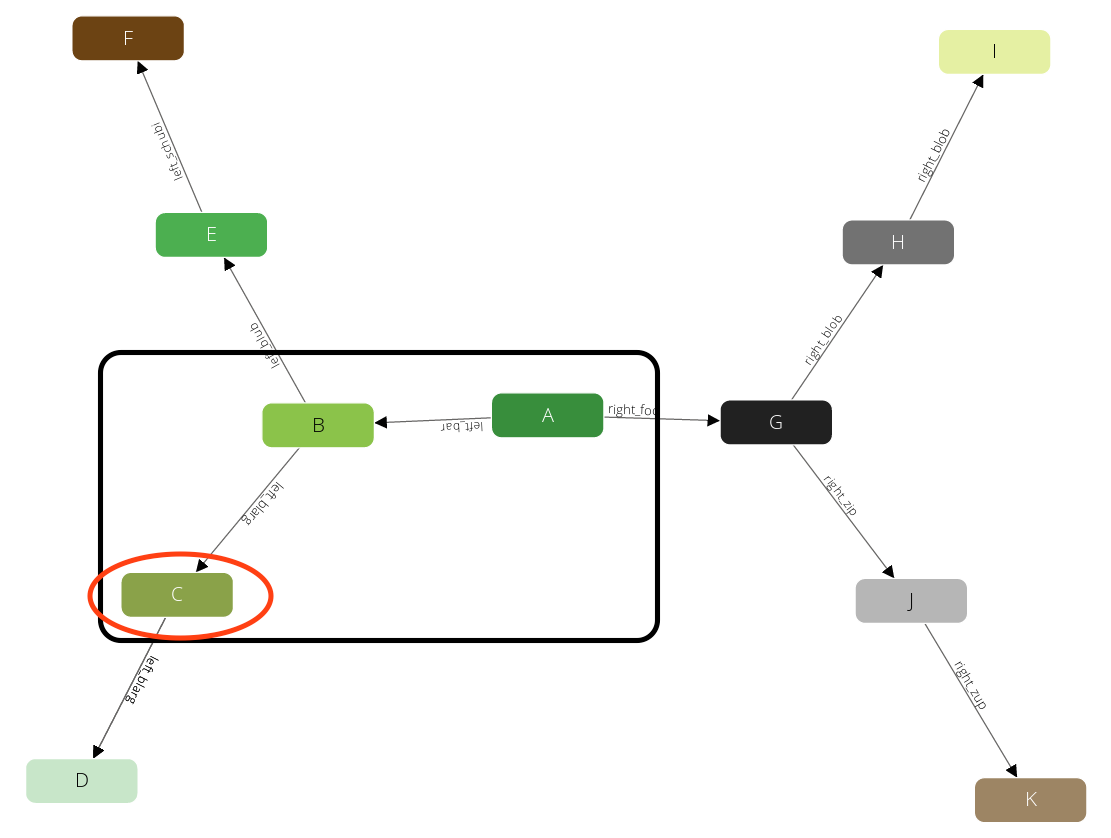
Again after we produced this result we will step back to B. But there is no neighbor of B left that we have not yet visited. Hence we go another step back to A and continue with any other neighbor there.
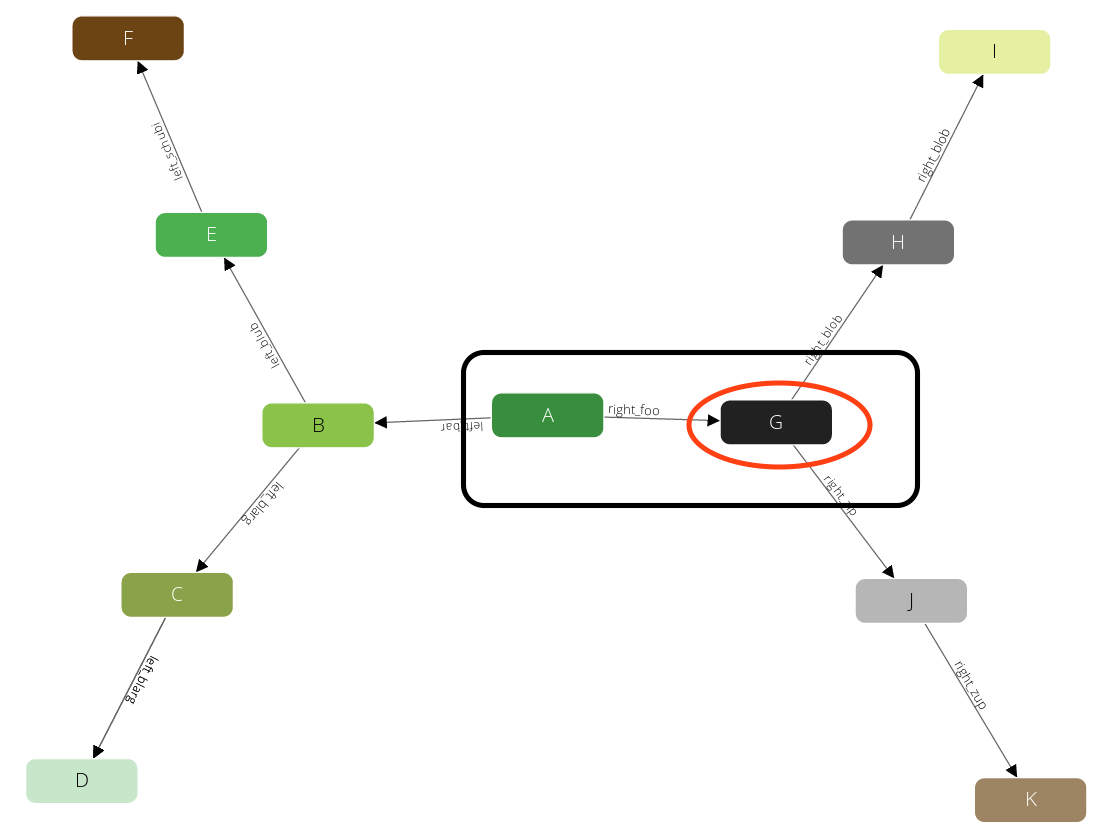
And identical to the iterations before we will visit H:
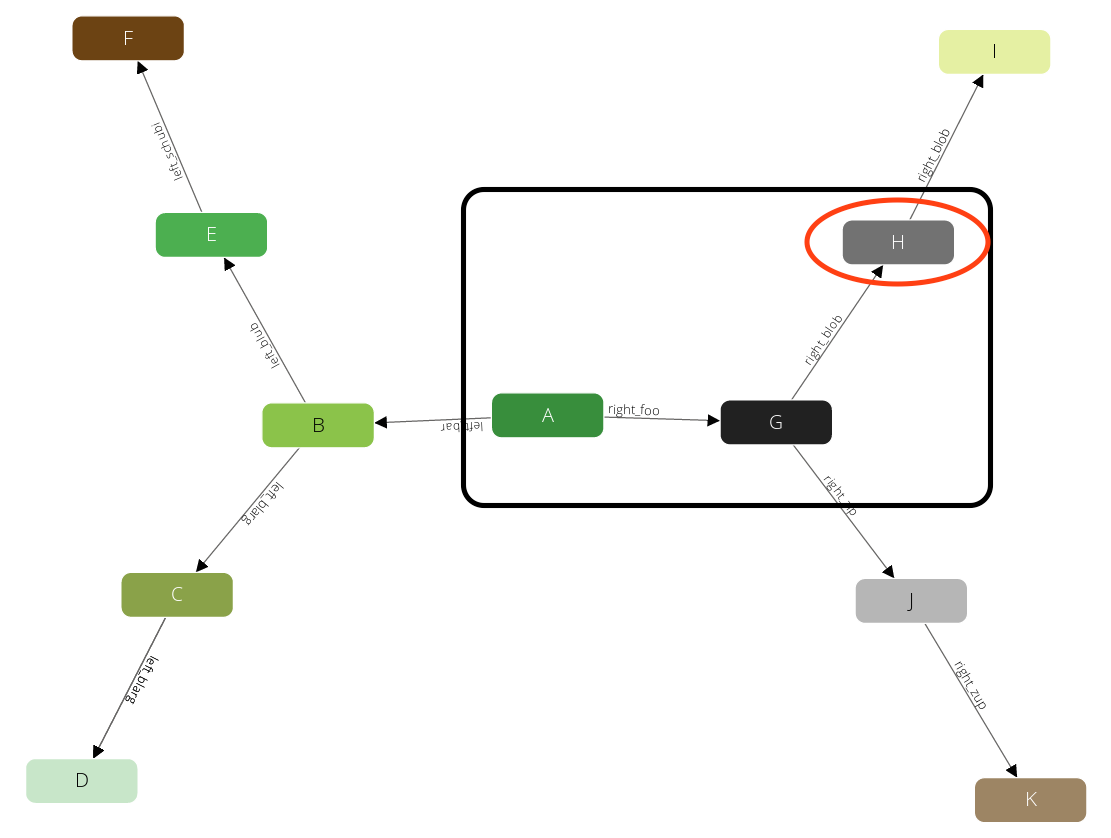
And J:
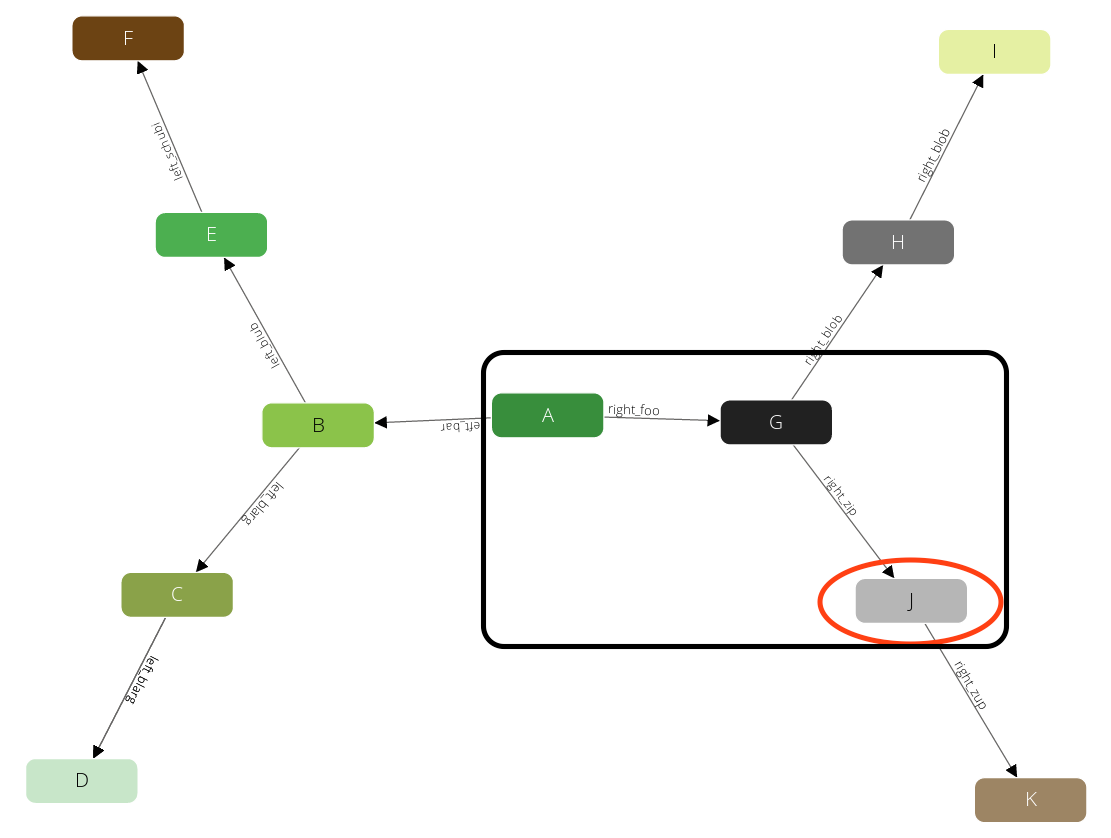
After these steps there is no further result left. So all together this query has returned the following paths:
- A → B
- A → B → E
- A → B → C
- A → G
- A → G → H
- A → G → J

